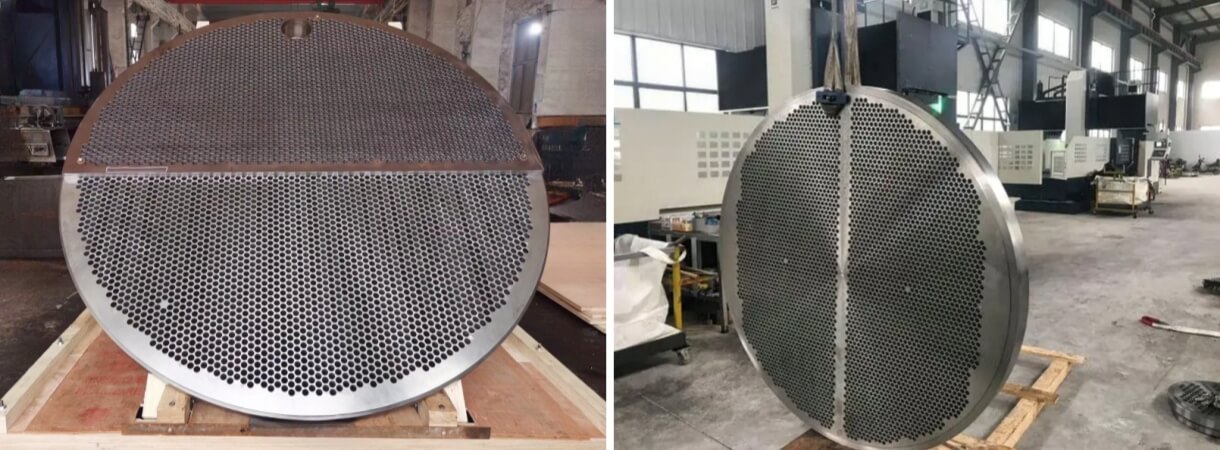October 21, 2024
What is double tube sheet?
A double tube sheet is a design feature commonly used in shell-and-tube heat exchangers and other similar equipment. In a shell-and-tube heat exchanger, there are two main components: the shell, which is a large outer vessel, and the tubes, which are smaller tubes that run through the shell. The double tube sheet design involves having two separate tube sheets within the shell.
Double tube sheet heat exchangers are generally used in the following two situations:
One is to absolutely prevent the mixing of media between the shell and tube sides. For example, for heat exchangers with water passing through the shell side or chlorine gas or chloride passing through the tube side, if the water in the shell side comes into contact with chlorine gas or chloride in the tube side, it will produce highly corrosive hydrochloric acid or hypochlorous acid, which will cause serious corrosion to the material in the tube side. Adopting a double tube sheet structure can effectively prevent the mixing of two materials, thereby preventing the occurrence of the above-mentioned accidents;
Another scenario is when there is a large pressure difference between the medium on the tube and shell side. In this case, a medium is usually added to the cavity between the inner and outer tube sheets to reduce the pressure difference between the medium on the tube and shell side. This series of heat exchangers adopts a double tube plate structure design, which connects the tube side and shell side with their respective tube sheets, breaking the traditional practice of using the same connecting tube plate for both the tube side and shell side of a row tube heat exchanger. This minimizes the risk of cross contamination, facilitates timely detection of leakage hazards, and ensures safe production for users.

How double tube sheet works?
1. Inner Tube Sheet: The first tube sheet is located inside the shell and is usually closer to one end. The tubes are attached to this inner tube sheet, and they pass through it to the other end of the shell.
2. Baffle Space: Between the inner tube sheet and the other end of the shell, there is a space that contains baffles. Baffles are plates or other structures designed to direct the flow of the fluid inside the shell and promote efficient heat transfer.
3. Outer Tube Sheet: The second tube sheet is located at the other end of the shell. The tubes are also attached to this outer tube sheet.

Whats the double tube sheet design advantages?
1. Prevents Cross-Contamination: Because there are two tube sheets, there is a space (the baffle space) between them. This helps to prevent cross-contamination between the two fluids flowing through the tubes, especially when they have different properties.
2. Enhanced Safety: In applications where one fluid is hazardous or toxic, the double tube sheet design provides an extra layer of safety by reducing the risk of leaks.
3. Reduced Risk of Thermal Expansion Issues: The double tube sheet design helps accommodate thermal expansion differences between the tubes and the shell. This is important to avoid problems that may arise from temperature-induced expansion and contraction.
4. Easier Inspection: The space between the tube sheets allows for easier inspection of the tubes and facilitates maintenance activities.
In summary, a double tube sheet design is a configuration used to enhance the safety, efficiency, and ease of maintenance in certain types of heat exchangers, particularly those dealing with potentially hazardous fluids.
Wuxi Changrun has provided high-quality tube sheets, nozzles, flanges, and customized forgings for heat exchangers, boilers, pressure vessels, etc. to many well-known petrochemical enterprises at home and abroad. Our customers include PetroChina, Sinopec, Chevron, Bayer, Shell, BASF, etc. Send your drawings to sales@wuxichangrun.com We will provide you with the best quotation and the highest quality products.
